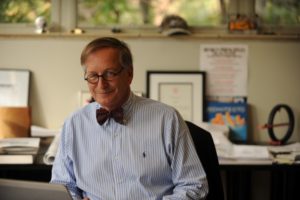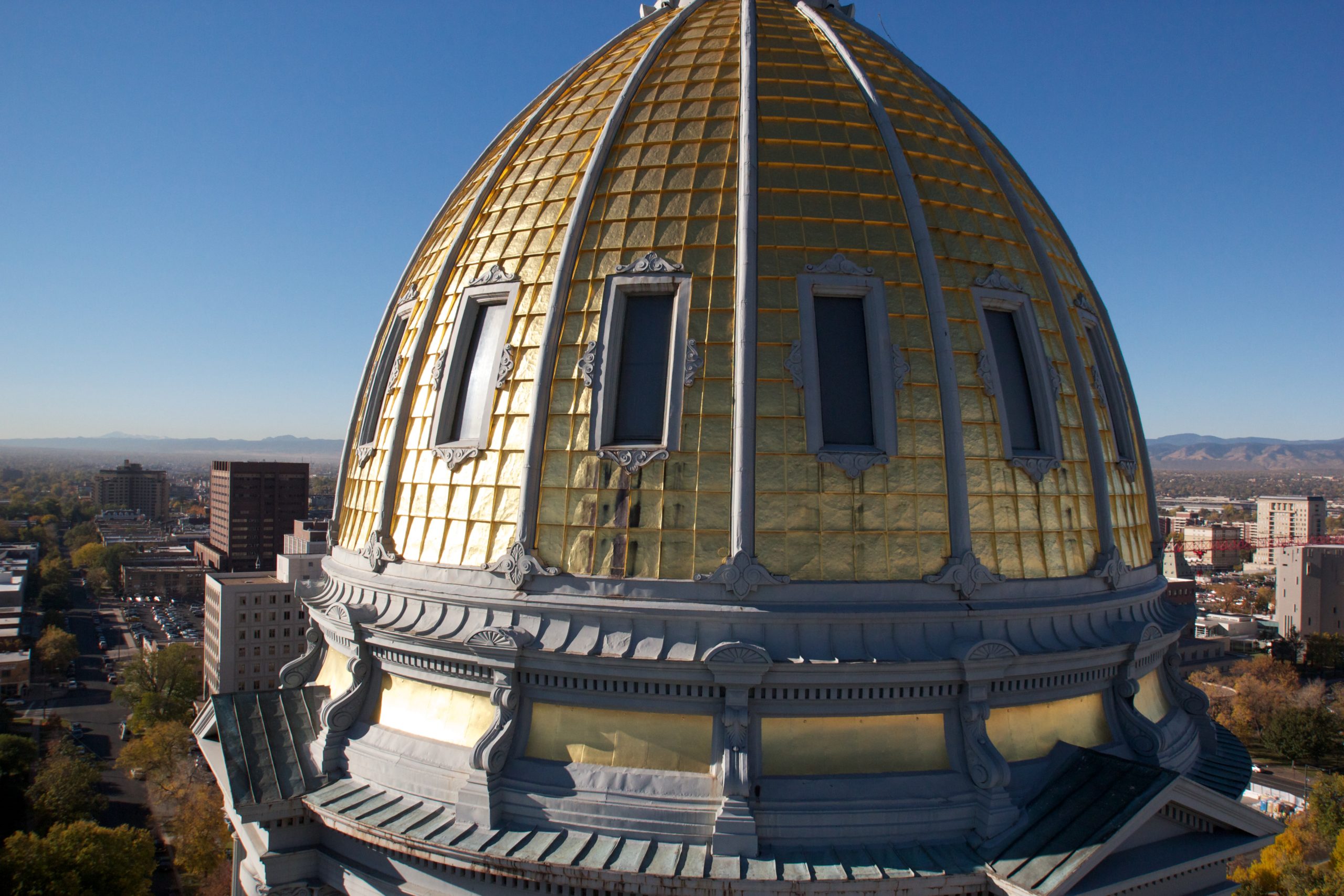
Dennis Humphries, principal at RATIO/HPA has been practicing architecture for more than 40 years and designing award winning civic buildings for decades. Having been principal-in-charge for over 80 public library projects, he has completed more public library work than any other architect in Colorado. Dennis has also played an important role as a preservation architect, working to renew and restore some of Colorado’s most treasured buildings.
Facts about Dennis:
- In 2019 Dennis was the recipient of the Civic Center Conservancy’s Elaine Asarch Award for the design of Civic Center Park, Denver’s only National Historic Landmark.
- Dennis was recognized as the 2013 recipient of the James S. Sudler, AIA Award for Contributions to AIA Colorado and Denver architecture.
- When not practicing architecture, Dennis can be found sailing on the waters of Lake Granby in the summer and snowboarding the slopes of Mary Jane in the winter.
- He considers himself a “library junkie” and enjoys traveling the U.S. and Europe in search of that next great library.
What sparked your interest in architecture?
Growing up in the Midwest, my father was responsible for the advancement of “all-electric gold medallion homes.” Our family moved frequently to new housing developments to reinforce my father’s pioneering commitment to the “all-electric” concept. I was constantly surrounded by construction sites spending the my evenings and weekends wondering through houses in various stages of construction. I would then spend the next day in our basement designing my own homes using the ideas that I had gained from those unauthorized site visits. As such I was fortunate to have consistently attended new “modern” schools. I learned at a very young age that architecture impacted everything we did and very quickly realized I wanted to be part of that creative process.
What is different or unique about your approach to architecture?
We bring a high level of passion to our projects. We are very honored that clients trust us with the ability to collaborate with them in pursuing their personal or organization’s mission. We work diligently to inspire all of us to think at a much higher problem solving level. I am often ask to reflect back on my career and offer my favorite project…my response is always– “the next one”. We continue to learn and build upon the successes of our previous projects. We also seek to engage our clients in a robust creative process that brings out unique ideas and thoughts on how to solve their problems. And finally, we must design buildings that are intended to last, buildings that are flexible to adapt to changes over the years, that are sustainable to operate and maintain and finally, bring joy to the users of these buildings.
What do you enjoy most about your role as a preservation architect?
We get to work on significant projects that have typically played an important role in our state’s history. Historic buildings have many, many “stories” to share. Our role as a preservation architect is to take a 100 year old building and then preserve it for future generations to enjoy those “stories” and new ones as well for the next 100 years.
Which Colorado buildings have you worked on and how did you approach each restoration?
We have been so very fortunate to have had the opportunity to work on a very diverse set of historic properties located throughout the “west.” I am very proud of our work at the Dora Moore School, an inner city DPS school designed by Robert Roeschlaub in 1889, restoring it as an iconic 21st century learning environment for the city. Other historic properties that have had a significant role in their respective communities and reflective of the resilient spirit of Colorado pioneers was our work on the barracks that housed the workers responsible for creating Red Rocks Amphitheater, the restoration of a Carnegie Library in Rocky Ford, CO and the restoration of the Rehder Building now the home of the Steamboat Art Museum. All these projects have so many “stories” to share and learn from as we finish the first decade of the 21st century.
What was the most challenging and rewarding part about working on the State Capitol Dome restoration project?
Probably the most challenging aspect of the Colorado State Dome project was the responsibility placed upon us as we restored Colorado’s most significant building. There were many technical challenges as the dome was constructed of materials rarely used in today’s world such as cast iron shaped in a number of highly ornate patterns. Additionally the dome was covered with copper shingles and then gilded with gold leaf, also a rare process requiring craftsman from Italy. Fortunately we had a very talented and uniquely experienced team of consultants and subcontractors to ensure the work was completed consistent with the intent of those before us. The dome as the iconic portion of the building had been touched by very few for well over its 100 year life. The interior walls of the dome bear the signatures of construction workers, craftsman, engineers and architects who had previously played a role in ensuring the building stood the test of time to represent all of Colorado. I was honored to have added my name to the wall.
What are you looking forward to most in the coming year?
It is commonly quoted the greenest building is that building already built. However, as we come to experience on a more regular occurrence the impacts of climate change, we must work hard to learn how to make our existing building stock become even more energy efficient and cost effective. We are highly accomplished in understanding the technical and political aspects of preservation but we must now find means to make them the most efficient 21st century buildings. Our firm’s merger this past year with RATIO brings us far greater depth and opportunities to find impactful means to ensure our buildings will continue to be responsible for future generations to enjoy.
As someone who has practiced architecture for more than 40 years, what advice do you have for the architects of tomorrow?
I feel so blessed as I can’t think of a more rewarding profession. I have personally been very fortunate to have been associated with so many clients, peers and civic leaders who have constantly inspired us to always reach higher. I always remind young architects that not only is this our community to shape with our buildings, but this is our community to lead with our actions. It is important the next generation of architects accept those challenges very seriously with dignity and honor. Make sure you find a way to make a difference as your steps will be followed by those who in the future will be standing on your shoulders. Honor the past, lead the present, but imagine a great future….and have fun.









